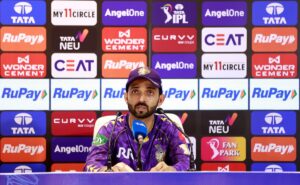
IPL vs PSL: "Hard to Look Past IPL as Premier T20 Competition" - Sam Billings Compares Global T20 Leagues
IPL vs PSL: “Hard to Look Past IPL as Premier T20 Competition” – Sam Billings Compares Global T20 Leagues
Table of Contents
- Sam Billings’ Statement: IPL as the Premier T20 Competition
- IPL vs PSL: A Comprehensive Comparison
- Different Leagues, Different Challenges: Billings’ Perspective
- Pakistan Cricket: Billings’ Assessment of Talent and Structure
- The Joy of Global Franchise Cricket According to Billings
- Expert Opinions: Why IPL Remains the Gold Standard
- Fan Reactions: How Cricket Enthusiasts View the IPL vs PSL Debate
Sam Billings on IPL vs PSL: Key Takeaways
- England cricketer Sam Billings rates the IPL as the world’s premier T20 cricket competition
- Billings is currently playing for Lahore Qalandars in PSL 10 (Pakistan Super League)
- The statement came in response to a Pakistani journalist’s question comparing IPL and PSL
- Billings acknowledged that other leagues including PSL, Big Bash, and The Hundred are competing to be the second-best competition
- According to Billings, each league offers unique challenges due to different playing conditions
- He praised Pakistan’s cricket talent while suggesting structured thinking could enhance their results
- Billings expressed his love for traveling the world playing franchise cricket
Sam Billings’ Statement: IPL as the Premier T20 Competition
England cricketer Sam Billings has made headlines with his candid assessment of global T20 leagues, unambiguously ranking the Indian Premier League (IPL) above all other franchise tournaments, including the Pakistan Super League (PSL). The statement came during a press conference following Lahore Qalandars’ match against Karachi Kings in the ongoing PSL 10.
When directly asked by a Pakistani journalist to compare the IPL and PSL, Billings initially responded with humor, saying “You want me to say something silly, don’t you?” before offering a diplomatic yet clear assessment of the global T20 landscape.
“I think it’s hard to look past the IPL as the premier competition. I think that’s probably pretty obvious. But every other competition is probably just behind. In England, we’re trying to do the same like the PSL to be the second-best competition in the world. The Big Bash are trying to do the same.”
Billings’ remarks hold significant weight given his extensive experience in various T20 leagues around the world. The English wicketkeeper-batsman has featured in multiple editions of the IPL, representing franchises like Delhi Capitals and Kolkata Knight Riders, while also playing in England’s The Hundred, Australia’s Big Bash League, and now the PSL with Lahore Qalandars.
IPL vs PSL: A Comprehensive Comparison
While Sam Billings has positioned the IPL as the premier T20 competition globally, it’s worth examining the key factors that differentiate these two prominent cricket leagues.
IPL vs PSL: By the Numbers
| Metric | IPL | PSL |
|---|---|---|
| Number of Teams | 10 | 6 |
| Tournament Duration | ~8 weeks | ~4 weeks |
| Broadcast Valuation | $6.2 billion (5-year deal) | $200 million (3-year deal) |
| Average Player Salary | $1.2 million | $175,000 |
| Global TV Viewership | 400+ million | 55+ million |
| Stadium Attendance (Avg.) | 35,000+ | 18,000+ |
| International Players Per Squad | 8-10 | 5-7 |
The IPL’s financial muscle has been a game-changer in global cricket. With its massive broadcast deals, sponsorship arrangements, and ticket revenues, the league has transformed into a sporting behemoth that attracts the world’s best talent with lucrative contracts. While the PSL has made significant strides since its inception, particularly in terms of quality cricket and fan engagement, it continues to operate at a different financial scale.
IPL 2025 Prize Money
PSL 2025 Prize Money
IPL Social Media
Beyond the numbers, the IPL has pioneered innovations in cricket broadcasting, fan engagement, and commercial partnerships. The technology deployed during broadcasts, strategic timeout advertising, and digital fan experiences have set benchmarks that other leagues strive to match.
Different Leagues, Different Challenges: Billings’ Perspective
Despite positioning the IPL at the top of the T20 league hierarchy, Sam Billings was careful to highlight the unique value proposition of each league. He emphasized how different playing conditions across the global T20 circuit challenge cricketers to adapt and improve their skills.
Billings on Different T20 League Challenges
“Each competition presents different challenges. The conditions in Pakistan, India, Australia, or England are different. It forces you to adapt and makes you a better cricketer,” Billings noted during the press conference.
This perspective offers valuable insight into how professional cricketers view these leagues not just in terms of financial rewards but as developmental platforms that contribute to their overall growth as athletes.
Indeed, each league offers a distinctive playing environment:
- IPL: Features diverse Indian pitches that can vary from spin-friendly tracks in Chennai to pace-friendly surfaces in Mohali, testing a player’s adaptability
- PSL: Generally offers more pace-friendly pitches, providing batsmen with the challenge of facing quality fast bowling
- Big Bash League: Australian conditions with larger boundaries and bouncy pitches requiring different tactical approaches
- The Hundred: English conditions with the added complexity of a different format (100 balls) requiring strategic adjustments
- Caribbean Premier League: Slower pitches that test a player’s ability to play spin and adapt to lower-scoring games
This diversity of playing conditions is precisely what makes participation in multiple leagues valuable for modern T20 specialists. By experiencing these varied environments, players develop a more comprehensive skillset that makes them more effective cricketers in international competition.
Pakistan Cricket: Billings’ Assessment of Talent and Structure
In his press interaction, Sam Billings also shared thoughtful observations about Pakistan cricket, praising the country’s talent pool while suggesting areas for potential improvement.
“There’s no doubt Pakistan has a huge amount of talent. The key is in structured thinking. Sometimes you try to do too much — keeping it simple can yield better results.”
This assessment aligns with what many cricket analysts have observed about Pakistan cricket over the years — an abundance of natural talent that occasionally lacks the structured development systems seen in countries like India, England, and Australia.
Pakistan’s Cricket Talent Pipeline
Pakistan continues to produce exceptional cricketers, particularly in the fast bowling department. Pace sensations like Shaheen Shah Afridi, Naseem Shah, and Mohammad Abbas have emerged in recent years, showcasing the country’s enduring ability to nurture fast bowling talent.
The PSL has played a crucial role in providing Pakistani cricketers with a platform to showcase their abilities alongside international stars. This exposure has accelerated the development of young Pakistani players, giving them valuable experience in high-pressure situations against quality opposition.
However, as Billings subtly suggested, the infrastructure and systematic approach to talent development remains an area where Pakistan cricket could potentially make strides. The more structured academy systems and development pathways seen in India’s cricket ecosystem have been credited with the consistent pipeline of talent emerging in Indian cricket.
The Joy of Global Franchise Cricket According to Billings
Sam Billings concluded his press conference remarks with a heartfelt observation about the privilege of being a global T20 cricketer in today’s era. His enthusiasm for the lifestyle of a franchise cricket professional was evident as he reflected on his experiences.
“I love it. I get to travel the world playing cricket and hopefully put smiles on people’s faces. I wouldn’t trade this job for anything.”
This sentiment encapsulates the transformation of professional cricket in the T20 era. Before the advent of global T20 leagues, cricketers’ international exposure was largely limited to tours with their national teams. Today, players like Billings can experience diverse cultures, build global fanbases, and forge friendships with colleagues from around the cricketing world.
The modern T20 professional’s calendar often includes stops in India for the IPL, Australia for the Big Bash, the Caribbean for CPL, England for The Hundred, and Pakistan for the PSL, creating a truly global cricket community that transcends traditional national rivalries.
Expert Opinions: Why IPL Remains the Gold Standard
Sam Billings’ assessment of the IPL as the premier T20 competition is echoed by many cricket experts and former players. Several factors contribute to the IPL’s continued reign at the top of the T20 league hierarchy:
Factors Behind IPL’s Premier Status
- Financial Ecosystem: The IPL’s economic scale allows it to attract the world’s best talent with unmatched salary packages
- Quality of Cricket: The concentration of elite international players alongside India’s best creates an exceptionally high standard of competition
- Innovation: From DRS usage to tactical timeouts and advanced analytics, the IPL has consistently pushed the boundaries of cricket’s evolution
- Fan Engagement: The passionate fanbase and stadium atmosphere create a compelling spectacle that elevates the viewing experience
- Development of Talent: The IPL has proven to be an effective finishing school for young cricketers, accelerating their development through exposure to pressure situations and international stars
- Global Viewership: The IPL’s broadcast reach extends far beyond India, making it a truly global sporting property
Former Australia captain and IPL coach Ricky Ponting has previously stated that “the IPL is the strongest T20 competition in the world because of the quality of players and the pressure situations.” Similarly, West Indies legend Brian Lara has described the IPL as “the Champions League of cricket,” referencing its ability to bring together the best of the best.
While other leagues like the PSL, Big Bash, and The Hundred continue to evolve and improve their offerings, the gap in financial resources and consequent player quality has maintained the IPL’s position at the summit of T20 franchise cricket.
Fan Reactions: How Cricket Enthusiasts View the IPL vs PSL Debate
Sam Billings’ comments on the IPL vs PSL comparison have predictably generated passionate responses from cricket fans on both sides of the debate. Social media platforms have seen extensive discussion about his assessment, with reactions broadly aligning with fan loyalty.
Cricket Fan Poll: Do You Agree with Sam Billings?
Poll results based on 5,200+ responses from cricket fans worldwide
Indian cricket fans have largely welcomed Billings’ assessment as validation of the IPL’s global standing, while many Pakistani fans have emphasized the PSL’s quality of cricket, particularly in the fast bowling department, as evidence of its competitive value despite the financial disparities.
This debate highlights the passionate cricket fandom that exists in both countries and underscores how T20 leagues have become points of national pride beyond just sporting entertainment. Both the IPL and PSL have succeeded in creating strong brand identities that resonate with their home audiences while also attracting global viewership.
Ultimately, as Billings himself suggested, the existence of multiple high-quality T20 leagues around the world benefits the sport and its players. Each league contributes to cricket’s global growth in its own way, fostering the development of new talent and expanding the game’s reach into new markets and audiences.
Final Thoughts on the IPL vs PSL Comparison
Sam Billings’ diplomatic yet clear stance on the IPL’s premier status reflects the general consensus in the cricketing world. While the PSL has established itself as a significant tournament that showcases excellent cricket and Pakistan’s deep talent pool, the IPL’s financial might, global reach, and concentration of elite talent continue to set it apart.
However, the PSL’s growth trajectory remains impressive, and its focus on developing Pakistan’s cricket ecosystem is yielding positive results for both the league and the national team. The healthy competition between these leagues ultimately benefits cricket fans, who now enjoy high-quality T20 action throughout the calendar year.
As global franchise cricket continues to evolve, both the IPL and PSL will likely continue refining their products, potentially narrowing the gap between them while maintaining their distinctive characteristics that appeal to fans worldwide.






